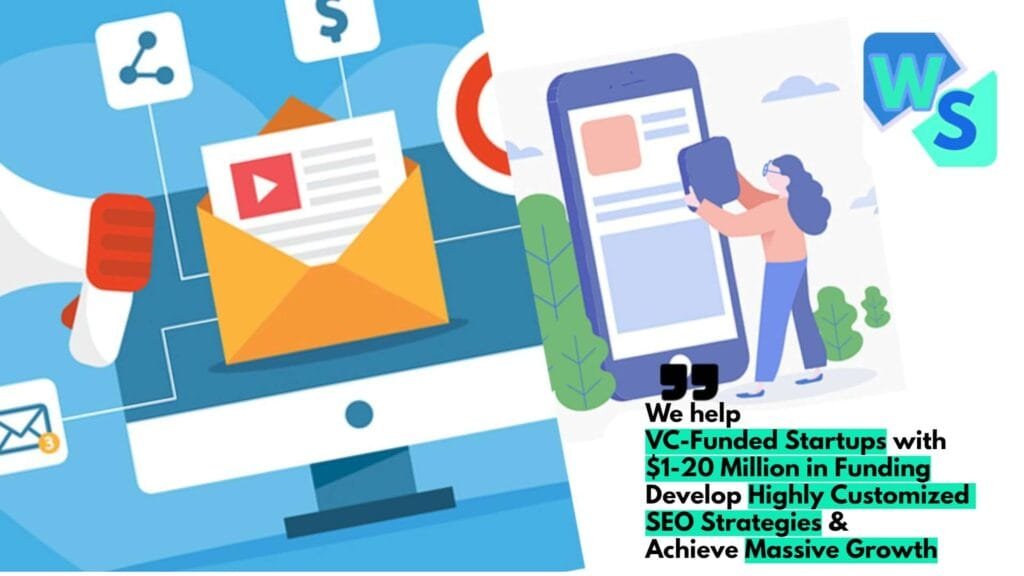Understanding Brand Loyalty
Importance of Customer Retention
Customer retention is a critical aspect of maintaining a successful business. Studies show that improving customer retention by just 5% can lead to a staggering increase in profits, potentially as high as 95% (LoyaltyLion). This statistic underscores the financial advantages of focusing on retaining existing customers rather than constantly seeking new ones.
Moreover, it costs approximately 25 times more to acquire a new customer than to retain an existing one (Annex Cloud). Therefore, investing in strategies to enhance customer loyalty and retention is not just prudent; it is vital for the sustainability of your revenue in the long run.
| Metric | Impact |
|---|---|
| Increase in profits with 5% retention improvement | Up to 95% |
| Cost difference between acquiring vs. retaining a customer | 25 times more to acquire |
Impact of Loyalty Programs
Loyalty programs significantly influence customer spending patterns and brand engagement. Data reveals that loyal customers can spend up to 67% more than new customers when participating in such programs (LoyaltyLion). This increase in spending can drive profitability and foster a deeper connection between the customer and your brand.
Furthermore, a significant 84% of consumers report a stronger inclination to remain loyal to brands that offer customer loyalty programs (Incentive Smart). Implementing a well-structured loyalty program is more than a temporary solution; it is a long-term investment into your customer base. These programs may take time to yield results, but their sustained effects can lead to increased customer loyalty and consistent revenue streams.
For those interested in further exploring the intricacies of loyalty, including brand loyalty programs and measuring brand loyalty, consider how these insights can help shape your strategies. Cultivating brand loyalty is essential; focusing on building relationships with your customers will foster long-term success in your business initiatives.
Benefits of Loyalty Programs
Implementing a loyalty program can lead to substantial benefits for your business. These programs not only foster customer satisfaction but also enhance overall profitability and engagement.
Increased Customer Spending
One of the primary advantages of brand loyalty rewards is the noticeable increase in customer spending. Research indicates that customers participating in loyalty programs tend to make more frequent purchases. For instance, Amazon Prime members spend an average of $1,500 per year on Amazon.com, while non-Prime customers only spend around $625 per year (LoyaltyLion). Loyalty programs motivate customers to return, as they can earn points or rewards with each transaction.
| Customer Type | Average Annual Spending |
|---|---|
| Amazon Prime Members | $1,500 |
| Non-Prime Customers | $625 |
Boost in Profitability
Beyond increased spending, loyalty programs significantly enhance profitability. They accomplish this by stimulating higher purchase frequency, leading to more significant sales volume over time. According to studies, companies with effective customer loyalty strategies can experience heightened repeat purchases. Specifically, businesses can boost their profits by focusing on cultivating brand loyalty through tailored incentive programs, such as points or rewards associated with subsequent purchases (LoyaltyLion).
Customer Persuasion
Loyalty programs also serve as powerful tools for persuading customers to choose your brand over competitors. When customers feel valued and recognized through rewards, they are more likely to continue patronizing your brand. For example, Sephora’s tiered “Beauty Insider” loyalty program encourages ongoing engagement by allowing customers to earn points that can be redeemed for discounts and exclusive items (LoyaltyLion). This sense of belonging can effectively sway customer preferences and foster long-term loyalty.
In summary, adopting brand loyalty rewards can substantially increase customer spending, boost profitability, and influence customer loyalty, making it an essential strategy for your business. For more insights on the marked benefits of fostering brand loyalty, consider reading through our articles on brand loyalty benefits and building brand loyalty.
Types of Loyalty Programs
Understanding the different types of loyalty programs is essential for effectively implementing brand loyalty rewards that resonate with your target audience. Here are four common types of loyalty programs:
Points-Based Programs
Points-based programs are among the most prevalent loyalty strategies. Customers earn points with each purchase, which can be redeemed for free products, discounts, or exclusive perks. Points can sometimes be accrued through other activities, such as leaving reviews or engaging on social media. This approach not only encourages repeat purchases but also engages customers in various ways (CleverTap Blog).
| Action | Points Earned |
|---|---|
| Every $1 spent | 1 point |
| Social media share | 5 points |
| Review submission | 10 points |
Tier-Based Programs
Tier-based programs assign customers different ranks based on their spending or engagement. Each tier offers escalating benefits, motivating customers to spend more in order to achieve higher status and unlock exclusive rewards. This system fosters a competitive spirit among customers and can lead to significant increases in sales volume as they strive to reach the next tier (CleverTap Blog).
| Tier Level | Requirements | Benefits |
|---|---|---|
| Bronze | 0 – $500 spent | Basic discounts |
| Silver | $501 – $1,000 spent | Extra discounts and perks |
| Gold | $1,001+ spent | Premium support and offers |
Paid Programs
Paid loyalty programs require customers to pay a fee—either one-time or recurring—in exchange for immediate benefits. These programs often generate higher customer value, as research indicates that customers are 60% more likely to increase their spending after subscribing to a paid loyalty program.
| Program Type | Fee | Benefits |
|---|---|---|
| Monthly Subscription | $10/month | Free shipping and exclusive deals |
| Annual Membership | $100/year | Yearly gift and bonus points |
Value-Based Programs
Value-based loyalty programs prioritize corporate social responsibility over direct customer rewards by donating a percentage of sales profits to charitable causes. This approach appeals to customers who value contributing to social, environmental, or economic initiatives. By aligning your brand with important causes, you can enhance customer loyalty while also making a positive impact (CleverTap Blog).
| Purchase Amount | Percentage Donated | Customer Impact |
|---|---|---|
| $50 | 5% ($2.50) | Supports local charities |
| $100 | 10% ($10) | Funds education initiatives |
By effectively integrating these loyalty programs into your marketing strategy, you can significantly increase brand loyalty while aligning with customer values and preferences. Understanding each type of loyalty program allows you to choose the best fit for your brand and audience. For more insights, refer to our articles on building brand loyalty and customer loyalty strategies.
Successful Loyalty Program Examples
Loyalty programs can significantly enhance your brand loyalty rewards strategy. Here are four successful examples that demonstrate effective implementation and results.
Starbucks Rewards
Starbucks has cultivated a strong customer retention base through its Starbucks Rewards program. This program utilizes an app that allows customers to earn points with each purchase, order ahead, pay in-store, and even access exclusive music playlists. Interactive offers and a user-friendly experience are key features that keep customers engaged and coming back for more.
| Feature | Description |
|---|---|
| Points Earning System | Earn stars for every dollar spent |
| Order Ahead Option | Skip the line by ordering via the app |
| Exclusive Offers | Members receive special promotions and rewards |
Sephora Beauty Insider
Sephora’s “Beauty Insider” program employs a tiered structure that allows members to earn points for purchases. These points can then be redeemed for discounts, exclusive products, or other rewards. The tier-based design encourages members to engage and discuss their beauty experiences online, fostering a sense of community and loyalty.
| Tier Level | Points Required | Perks |
|---|---|---|
| Insider | 0 | Birthday gift, free birthday product |
| VIB (Very Important Beauty) | 350 | Exclusive access to products and events |
| Rouge | 1,000 | Free shipping, early access to sales |
Amazon Prime
Amazon Prime demonstrates how a subscription-based loyalty program can drive customer spending. Prime members spend an average of $1,500 annually on Amazon.com, significantly more than the $625 spent by non-Prime customers. This statistic highlights the success of subscription loyalty, as members unlock numerous benefits, including free shipping, streaming services, and exclusive deals (LoyaltyLion).
| Benefit | Description |
|---|---|
| Free Shipping | Unlimited free two-day shipping on eligible items |
| Streaming Video | Access to Prime Video for movies and TV shows |
| Exclusive Deals | Early access to lightning deals and offers |
North Face XPLR Pass
The North Face’s “XPLR Pass” program is structured to offer rewards such as discounts, competitions, early product access, and cashback on purchases. This loyalty program effectively caters to customers who are not just consumers, but also outdoor enthusiasts that share similar values, fostering a deeper brand connection (LoyaltyLion).
| Rewards Offered | Description |
|---|---|
| Discounts | Members receive exclusive discounts on items |
| Early Access | First dibs on new product launches |
| Member Competitions | Opportunities to enter exclusive contests |
These examples illustrate the varied approaches to implementing brand loyalty rewards programs and the positive outcomes they can yield. By studying these successful programs, you can gain insights into how to enhance your own loyalty initiatives for maximum impact. For further exploration of various strategies, consider reviewing building brand loyalty or customer loyalty management.
Strategies for Effective Loyalty Programs
Implementing effective loyalty programs is essential for enhancing brand loyalty. Here are some strategies you can adopt to maximize the impact of your brand loyalty rewards.
Personalized Rewards
Offering personalized rewards is one of the most effective ways to engage customers. By tailoring rewards based on individual purchasing habits, preferences, and interests, you enhance the likelihood that customers will participate in your loyalty program. Personalization fosters a deeper connection between your brand and your customers, making them feel valued.
For instance, you can analyze customer data to provide exclusive discounts on frequently purchased items or offer rewards for special occasions such as birthdays. This targeted approach not only boosts customer satisfaction but also encourages repeat visits. For more insights on implementing effective programs, visit our article on customer loyalty strategies.
Referral Programs
Referral programs can significantly amplify your brand’s reach and enhance customer loyalty. By incentivizing current customers to refer new ones, you benefit from word-of-mouth marketing while rewarding existing customers for their loyalty. A well-structured referral program offers tangible rewards, such as discounts or points, once a referral leads to a successful sale.
Implementing a referral program not only attracts new customers but also reinforces the loyalty of existing ones, as they feel appreciated for contributing to the brand’s growth. For more details on how to create effective referral programs, check our guide on building brand loyalty.
Gamification
Incorporating gamification into your loyalty program is an innovative way to engage customers. Gamification utilizes game-like elements, such as challenges, progress tracking, and leaderboards, to make the rewards process more interactive and enjoyable. This strategy leverages the psychological principle of gamification to motivate customers to earn rewards by completing specific actions.
For example, customers can earn badges for reaching milestones or points for engaging with your brand on social media. Such features foster competition and encourage frequent interactions, contributing to greater brand loyalty. Explore additional gamification techniques in our article on loyalty marketing tactics.
Reward Frequency
The frequency of rewards is a critical factor in the success of loyalty programs. Offering rewards too infrequently can lead to decreased engagement and interest in your program. Conversely, providing rewards frequently keeps customers motivated and engaged with your brand.
Establishing a regular schedule for rewards can reinforce customer behavior and enhance satisfaction (2Stallions). Consider analyzing customer feedback to determine optimal reward frequency. Regularly gathering insights, either through surveys or direct conversations, can help in fine-tuning your approach. For more about measuring the effectiveness of your loyalty program, visit our resource on measuring brand loyalty.
By adopting these strategies, you can enhance the effectiveness of your loyalty programs, ensuring they contribute positively to customer retention and overall brand loyalty. Explore our resources on brand loyalty benefits for further insights.
Metrics for Loyalty Program Success
Measuring the effectiveness of your brand loyalty rewards program is critical to understanding its impact on your business. Key metrics can provide valuable insights into customer retention, spending habits, and overall program success. In this section, we will explore three important metrics that you should utilize to evaluate your loyalty initiatives: customer retention rates, repeat purchases, and average order value.
Customer Retention Rates
Customer retention rates reflect the percentage of customers who continue to engage with your brand over a specified period. This metric is crucial because acquiring new customers is significantly more costly—up to 25 times more—than retaining existing ones (Annex Cloud). An effective loyalty program can enhance customer retention, fostering a loyal customer base that consistently supports your brand.
| Time Frame | Customer Retention Rate (%) |
|---|---|
| Month 1 | 85% |
| Month 3 | 75% |
| Month 6 | 65% |
| Month 12 | 50% |
This table illustrates a hypothetical example of customer retention rates over one year. Tracking this metric annually can reveal the long-term impact of loyalty initiatives.
Repeat Purchases
Repeat purchase rate is another essential metric indicating how often a customer makes subsequent purchases after their initial transaction. Evidence suggests that customers enrolled in loyalty programs spend 67% more than those who are not, highlighting the significance of fostering repeat buyers (Annex Cloud). Understanding this metric aids in assessing the effectiveness of your rewards program in encouraging continued engagement.
| Customer Segment | Initial Purchases | Repeat Purchases | Repeat Purchase Rate (%) |
|---|---|---|---|
| Non-Members | 100 | 30 | 30% |
| Loyalty Members | 100 | 50 | 50% |
This table showcases hypothetical repeat purchase metrics for loyalty members versus non-members, emphasizing the impact of brand loyalty initiatives.
Average Order Value
Average order value (AOV) measures the average amount each customer spends per transaction. A higher AOV indicates that customers are purchasing more or accessing higher-priced items, which can significantly boost your revenue. Increasing customer spending through loyalty programs is central to overall profitability.
| Program Type | Average Order Value ($) |
|---|---|
| Non-Members | 50 |
| Loyalty Members | 83 |
This comparison highlights the difference in spending between loyalty program members and non-members. The increased AOV among loyalty members reinforces the financial benefits of effective loyalty strategies.
Tracking these metrics not only reveals the success of your loyalty programs but also guides you in refining your strategies for future growth. By focusing on customer retention rates, repeat purchases, and average order value, you can gain deeper insights into customer behavior and relationships. To discover more about managing your loyalty initiatives, visit our page on customer loyalty management.
Evaluating Loyalty Program Effectiveness
Evaluating the effectiveness of your loyalty program is essential for ensuring its success in enhancing brand loyalty. This process involves gathering customer feedback, monitoring key metrics, and implementing strategies to boost customer retention.
Customer Feedback
Gathering feedback through surveys or engaging in customer conversations can provide valuable insights into the effectiveness of rewards in loyalty programs. Understanding which rewards resonate most with your target audience empowers you to make data-driven decisions that enhance customer retention (2Stallions). Implement regular feedback mechanisms to capture customer experiences and opinions regarding their rewards.
| Feedback Method | Description |
|---|---|
| Surveys | Send out targeted surveys to solicit customer opinions and suggestions. |
| Focus Groups | Conduct focus group discussions to gain deeper insights. |
| Direct Conversations | Engage customers during transactions to ask about their loyalty experiences. |
Monitoring Key Metrics
To gauge the success of your loyalty program, it is crucial to monitor relevant key metrics. Tracking metrics such as customer retention rates, repeat purchases, average order value, and customer lifetime value offers insights into how your loyalty program impacts customer loyalty and retention. Here are some important metrics to consider:
| Metric | Description |
|---|---|
| Customer Retention Rate | The percentage of customers who continue to shop with your brand over a specified period. |
| Repeat Purchases | The number of times customers make additional purchases after joining the loyalty program. |
| Average Order Value | The average amount customers spend per transaction. |
| Customer Lifetime Value | The overall revenue a customer is expected to generate during their relationship with your brand. |
Enhancing Customer Retention
To enhance customer retention through your loyalty program, leverage the psychological aspects of customer engagement. Implement strategies that align with customer preferences and behaviors. For example, understanding the reciprocity principle can help you design rewards that feel valuable and compelling, as customers feel an obligation to reciprocate the brand’s generosity.
Additionally, consider periodically updating your rewards and communication strategies to maintain customer interest. The anticipation of receiving rewards can also release dopamine, fostering a sense of pleasure and motivation among customers. Engaging in ongoing analysis and adjustment can help improve your program’s effectiveness.
Implementing these measures will provide you with the tools necessary to evaluate and enhance your brand loyalty rewards program effectively. By focusing on feedback, monitoring key metrics, and employing strategies for improved retention, you can create a compelling and successful loyalty experience for your customers. For more insights on brand loyalty, explore our articles on brand loyalty statistics and customer loyalty management.
Psychological Aspects of Loyalty Programs
Understanding the psychological principles behind loyalty programs can significantly enhance their effectiveness. By leveraging concepts such as the reciprocity principle, gamification techniques, and reward frequency strategies, you can better engage your customers and increase their loyalty to your brand.
Reciprocity Principle
The reciprocity principle is a powerful psychological concept that underpins many loyalty programs. When you offer rewards for repeat business, your customers feel a sense of obligation to reciprocate your generosity. This mutual exchange fosters a bond of loyalty and encourages customers to return to your brand for further transactions.
Loyalty programs capitalize on this principle by providing incentives such as points, discounts, and exclusive offers. This creates a cycle of giving and receiving that enhances customer retention. Additionally, the anticipation of receiving rewards releases dopamine in the brain, which is associated with pleasure and motivation, further reinforcing the desire to remain engaged with your brand (2Stallions).
Gamification Techniques
Gamification is another effective approach to increasing customer engagement within loyalty programs. By incorporating game-like elements such as points, levels, and challenges, you can create an interactive and enjoyable experience for your customers. This strategy transforms a transactional process into a more dynamic interaction, making customers feel more connected to your brand.
Gamification encourages active participation, as customers strive to achieve goals and unlock rewards. This sense of accomplishment contributes to a more positive brand association. As customers progress through levels or accumulate points, they experience a sense of achievement, enhancing their overall satisfaction and loyalty to your brand (2Stallions).
Reward Frequency Strategies
The frequency of rewards can significantly impact customer retention and satisfaction. Establishing a consistent schedule for rewards not only keeps customers engaged but also sets up predictable expectations. This predictability reinforces their commitment to your brand, as they anticipate future rewards.
You can adopt various strategies to optimize reward frequency. For example, consider offering smaller, more frequent rewards rather than infrequent larger bonuses. This approach keeps customers motivated and reinforces their loyalty over time. Additionally, providing bonus rewards during specific periods can encourage customers to engage more actively with your loyalty program.
By thoughtfully employing the principles of reciprocity, gamification techniques, and effective reward frequency strategies within your brand loyalty programs, you can cultivate a strong sense of loyalty and engagement among your customers. These psychological aspects play a crucial role in the success of your brand loyalty initiatives, making them essential components of your overall marketing strategy.





















